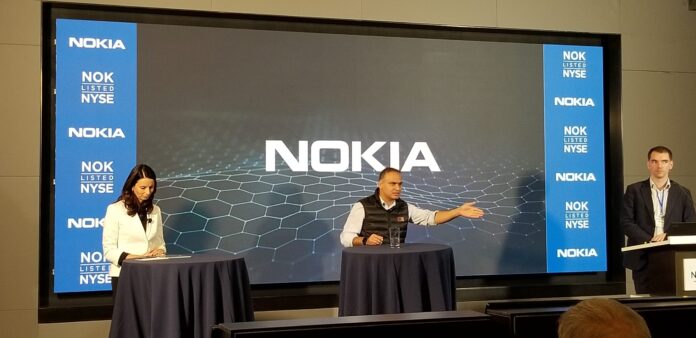NEW YORK—We have yet to achieve a fully-5G world, but research and development for the next generation of technology constantly moves forward. During an event at the New York Stock Exchange on Friday, Nishant Batra, Nokia’s chief strategy and technology officer, gave some insights about what Nokia sees shaping the tech and wireless worlds—and its business—through 2030.
The main influences, Batra said, fall into three categories: User needs among a more diverse set of customers that include industry verticals and non-consumer-oriented networks; tech development of the metaverse, cloud computing, artificial intelligence and possibly Web3; and socio-political factors including demands for greater sustainability and cybersecurity, as well as the trend toward increasing government interest in investing in technology research and development amid political/regional tensions.
“Deglobalization is an absolute truth today,” Batra said. “It’s increasing. It impacts supply chains, it impacts standardization. That’s something we keep a very close eye on. We don’t want the standards to fragment—that’s not good for the business and the industry.”
He also said that when it comes to product development,it’s no longer enough to put together the right product at the right price. Now the power-use profile of a product and its security are two additional metrics that have come into play.
Nokia already sees the early metaverse coming to fruition—not, Batra says, in the consumer space but in industry, through the development of digital twins of various industrial environments. He says that the consumer metaverse won’t take full form until the world is well into 5G Advanced and future 6G systems, but Nokia believes that given the development it is seeing thus far, the industrial metaverse will be the first to happen.
The traffic needs in the next eight years only increase. Batra explained that Nokia extrapolated based on the dominant role of video in network traffic and believes that by 2028, the usage of networks will shift from smartphone-based consumption of 8K video to consumer use of mixed reality. “That changes how we build these networks,” he added.
Meanwhile, Nokia also anticipates a middle-ground scenario of enterprise data use going up by 9x and that industrial data use—driven by the use of digital twins/metaverse applications, industrial applications and on-premise edge—could be as much as 100x by 2030. Nokia, he said, is looking at gaining ground in the industrial metaverse, preparing for the enterprise opportunity and fortifying its role in standardization in preparation for 5G Advanced and 6G. Because, as Batra pointed out, traffic has been going up on networks for decades and that doesn’t mean it’s a given that it brings additional strategic revenue with it.
Instead, he offers that Nokia sees four future sets of customers, rather than just service providers. Service providers will still be a customer and have their requirements primarily focused on consumer needs, but there will also be government customers (with far more stringent concerns around security), IT customers and industrial customers—and he added, Nokia doesn’t believe that CSPs will be the only ones to serving those other customers by 2030. Those customers, he says, are focused on “consumability” and the outcomes that their networks produce. “When we sell a private network to a mine, they’re not worried about what’s the throughput, they’re worried about the use case. They’re worried about consuming this for an outcome,” he said. And that means, Batra went on, that “we can’t just keep building [networks] unidimensionally for performance.”
He offered up potential metaverse use cases and value chains that included gaming for consumers as well as extended reality for education and real-time digital twins for factory automation. The value chains involved don’t necessarily involve CSPs, but system integrators and other types of partners, and Batra sees an all-encompassing role of “everything-as-a-service” — including the network code itself. If the telecom industry is still only selling subscriptions by 2030, “this industry will have a problem,” Batra said—network providers will have to sell APIs together with encryption in order to stay in the loop and meet the evolving needs of the companies who are making use of both CSP and their own networks.

